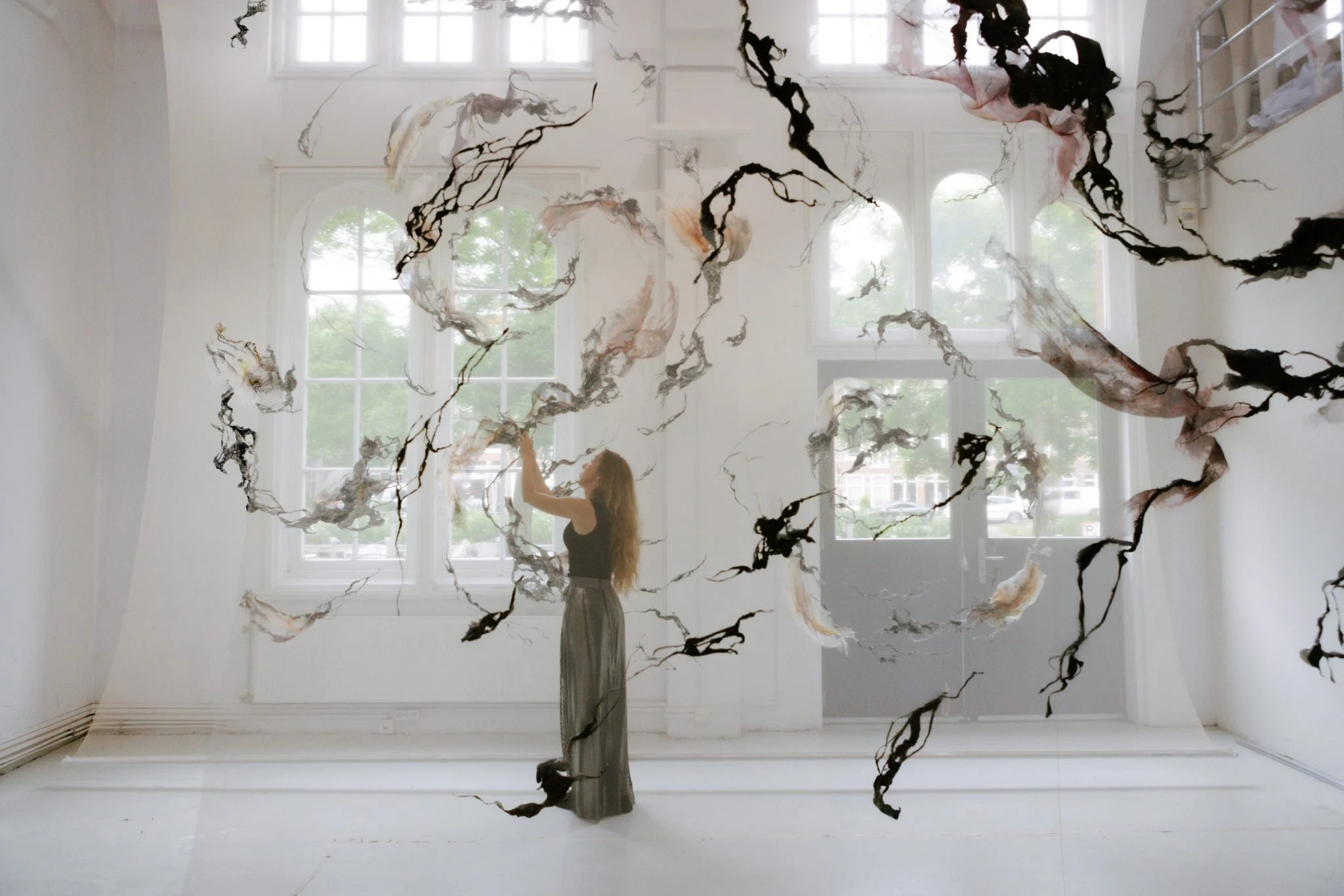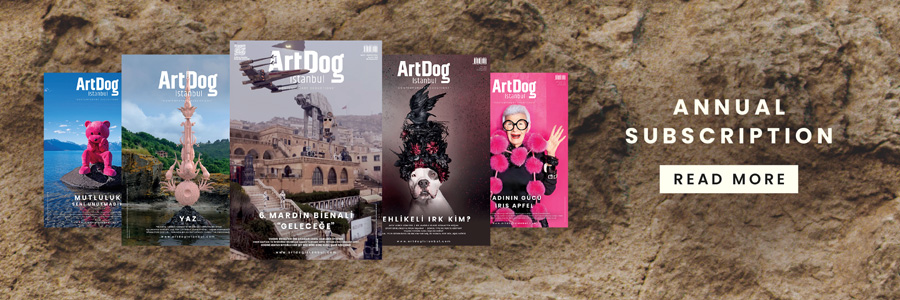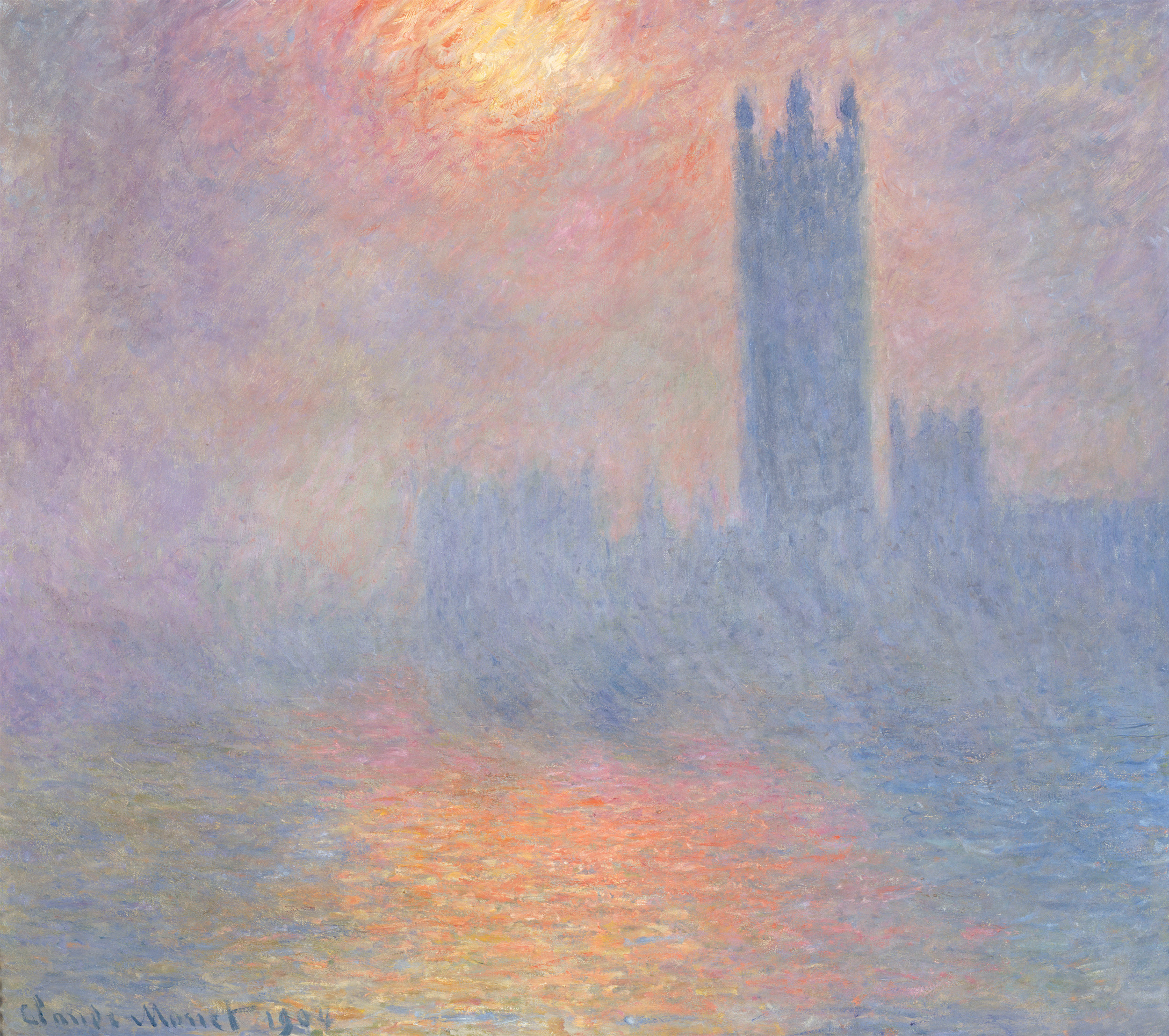Ever wished to wear a real piece of artwork? The line between art and fashion became even more indistinct yesterday morning during “Hybrid,” a show by Dutch designer Iris van Herpen at Paris Haute Couture Week.
Instead of the usual runway lined with models, the designer’s “body sculptures” were showcased by performers, transforming them into living works of art. These performers appeared from an elevated platform in a way reminiscent of medieval statues on the city’s cathedrals. The installation also featured four “aerial sculptures,” which were grand yet delicate pieces with ethereal, swirling forms, created by applying paint, silk, and decorative 3D-printed elements onto suspended sheets of tulle.

“This is quite new for me, to go away from the body,” said van Herpen ahead of the show. “I’ve always seen my body works as sculptures themselves and love working for the body. There are certain dynamics and transformations that I feel really inspired by.” Having learned classical ballet as a child, the designer naturally envisions form in motion.
“At the same time, I really like letting go of the scale and the space of the body,” added van Herpen. “But the aerial sculptures live in the same universe. I really feel there is a dialogue between them.”
Although the aerial works are stationary, they evoke a sense of cyclonic movement. “Unfolding Time” resembles delicate wisps of silvery smoke rising effortlessly from the floor, while “Embers of the Mind” captures the swirling rhythms of the wind.

The entire show lasted 45 minutes, significantly longer than many fashion shows. “Couture pieces are experienced very briefly,” said van Herpen. “For me, there is also beauty to a longer duration of experiencing art.” Considering the aerial pieces took up to four months each to produce. “I really wanted to stretch my own perception of time in the creative process but also for the audience when they perceive the work.”
This new journey was inspired by the preparations for “Sculpting the Senses,” a recent retrospective of van Herpen’s work at the Musée des Arts Décoratifs in Paris. Reflecting on her 15 years of creating contemporary couture pieces for celebrities like Beyoncé, Lady Gaga, and Björk, she felt a latent artistic impulse that had yet to be fully explored.
“It wasn’t a quick decision,” said van Herpen. “I had these works in my mind already for a few years.” The designer has been influenced by artists such as the 16th-century Dutch painter Hieronymus Bosch, along with contemporary sculptors like David Altmejd, Antony Gormley, and Louise Bourgeois.
Transitioning from fashion designer to sculptor brought its own challenges. For instance, van Herpen’s couture atelier in Amsterdam was too small to accommodate her new practice, leading her to open a new studio in an office space in the city.

“When I work on the couture pieces, I don’t sketch,” said van Herpen. “I always just do draping on the mannequin so it’s a very sculptural approach already. I need the three-dimensionality.” She often also uses transparent tulle in order to further emphasize the body. “It’s like an invisible skin,” she said. “I think you can look at the skin as a canvas by itself. The aerial sculptures are made from the same base.”
Although van Herpen’s work is renowned for its experimental nature and pioneering techniques, she discovered that working with such delicate material on a different scale demanded a new “trial and error” approach. “| started building up the layers, and I found that if I went in a certain direction the tulle would start pleating, for example,” she said. “That’s why it took a year to really find the right balance between the invisibility of it and the three-dimensionality.”








